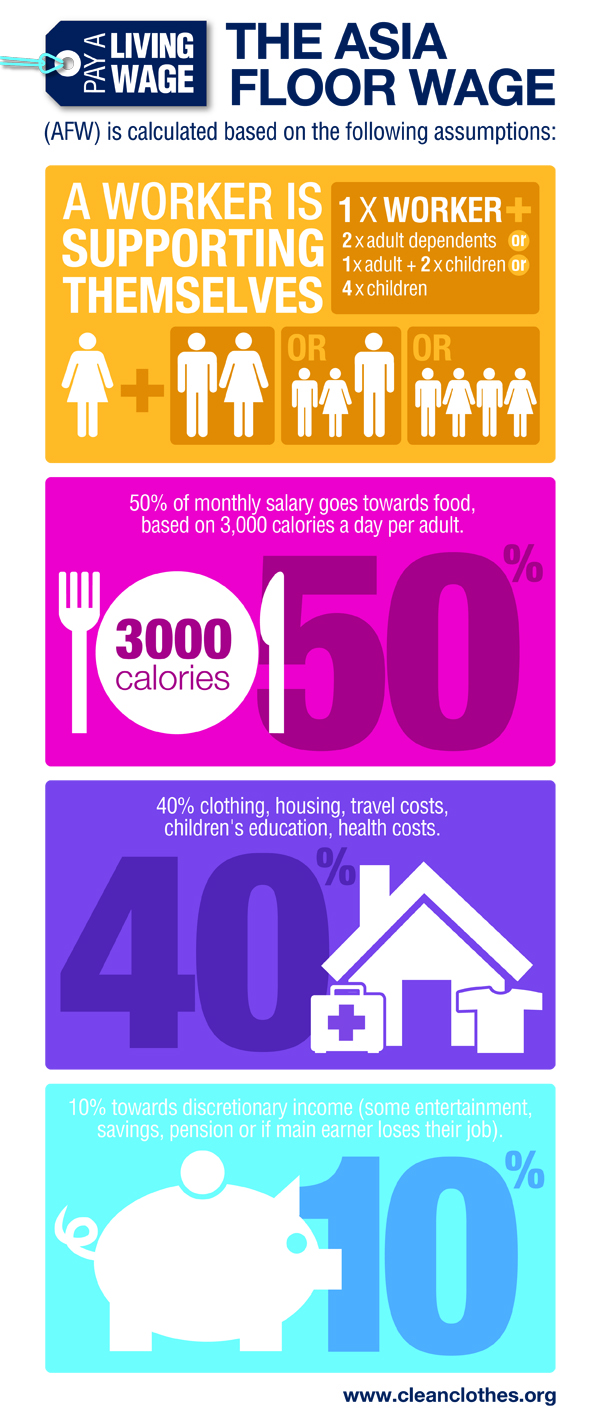Calculating a Living Wage

A Living Wage calculation across a region is key in ensuring workers receive a decent wage, but also that wage differences do not mean companies pull out of one country to move manufacturing to a country with lower costs - the so called race to the bottom.
Living wage calculations must take into account some common factors including the number of family members to be supported, the basic nutritional needs of a worker and other basic needs including housing, healthcare, education and some basic savings.
Clean Clothes Campaign is part of the Asia Floor Wage Alliance – an alliance of Asian trade unions and labour groups who have calculated a living wage formula for Asia.
The 2013 Asia Floor Wage figure is PPP$725.
The Asia Floor Wage Alliance base their calculations on the following assumptions:
- A worker needs to be able to support themselves and two other “consumption units” (1 Consumption unit = 1 adult or 2 children)
- An adult requires 3,000 calories a day to be able to carry out their work.
- In Asia food costs account for half a workers monthly outgoings.
The Asia Floor Wage is calculated in PPP$ - Purchasing Power Parity $, which are an imaginary World Bank currency built on the consumption of goods and services by people, allowing standard of living between countries to be compared regardless of the national currency.
The Asia Floor Wage Alliance carry out regular food basket research in the region to calculate new Asia Floor Wage figures.
Click here to view alternative currencies
Living Wage calculations outside of Asia
The Asia Floor Wage calculation cannot be simply applied to other regions as some of the assumptions do not apply. For example food costs accounting for half of income, this is the case in Asia where food costs are relatively high and standards of living such as housing are very low, however in other regions such as Eastern Europe food costs are relatively lower when compared to housing.
Clean Clothes Campaign partners are working on defining and calculating living wages for other garment producing regions.
